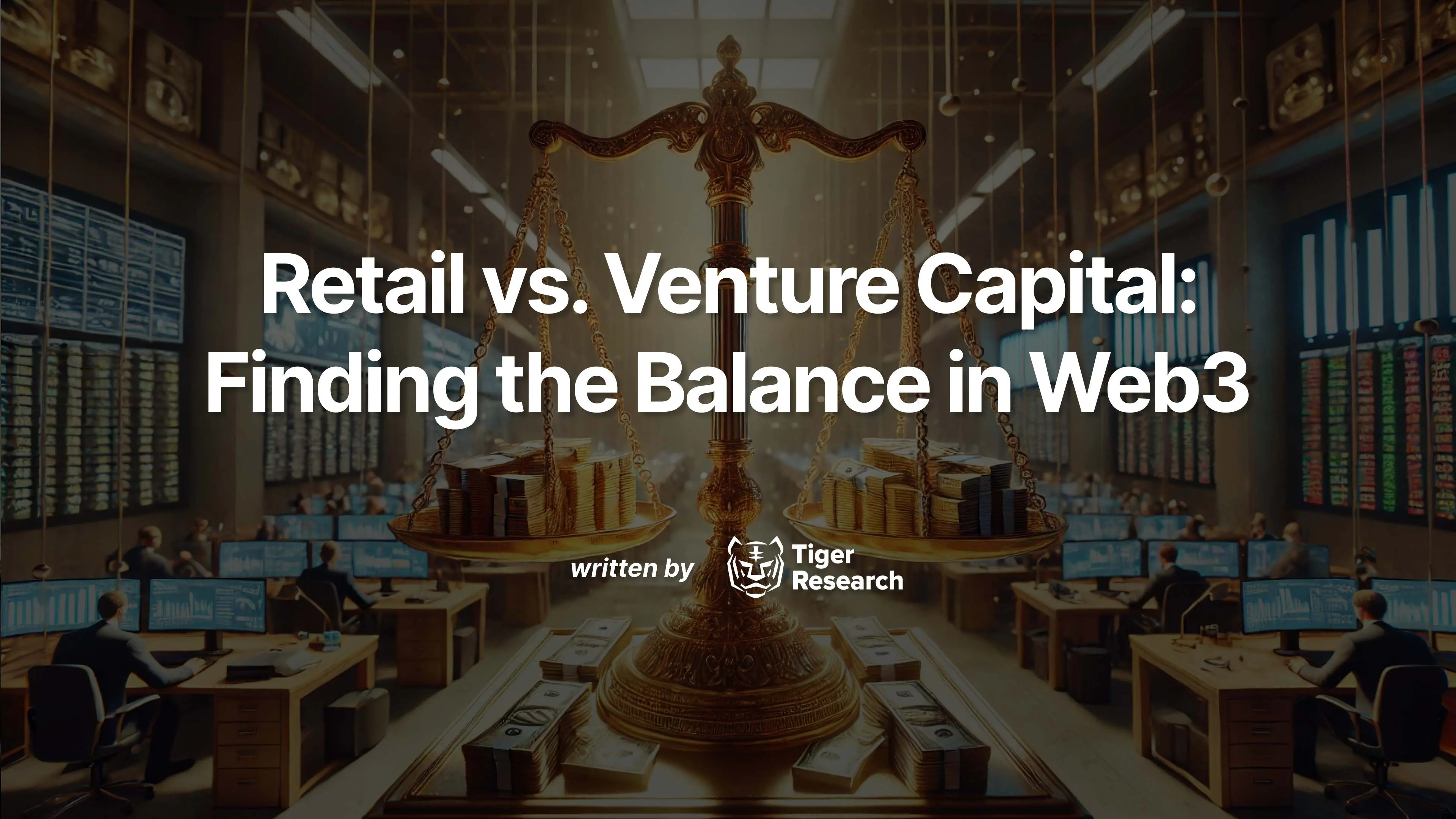2022 Web3 Developer Report: The number of new developers reaches an all-time high, and DeFi developers increase by 240%
Written by: Maria, Electric Capital
Compiled by: Shiwen, Planet Daily
Electric Capital released the 2022 Annual Blockchain Developer Report, analyzing 250 million code submissions from multiple ecosystems, as well as data from CoinGecko, CoinMarketCap, DappRadar, DefiLlama, Github, Gitlab, etc. This report does not cover "fork" code.
Despite a decline of over 70% in token prices, the number of monthly active developers increased by 5% year-on-year
As of December 2022, there were still 23,343 developers active each month.
There were over 471,000 code submissions per month for developing open-source crypto (projects).
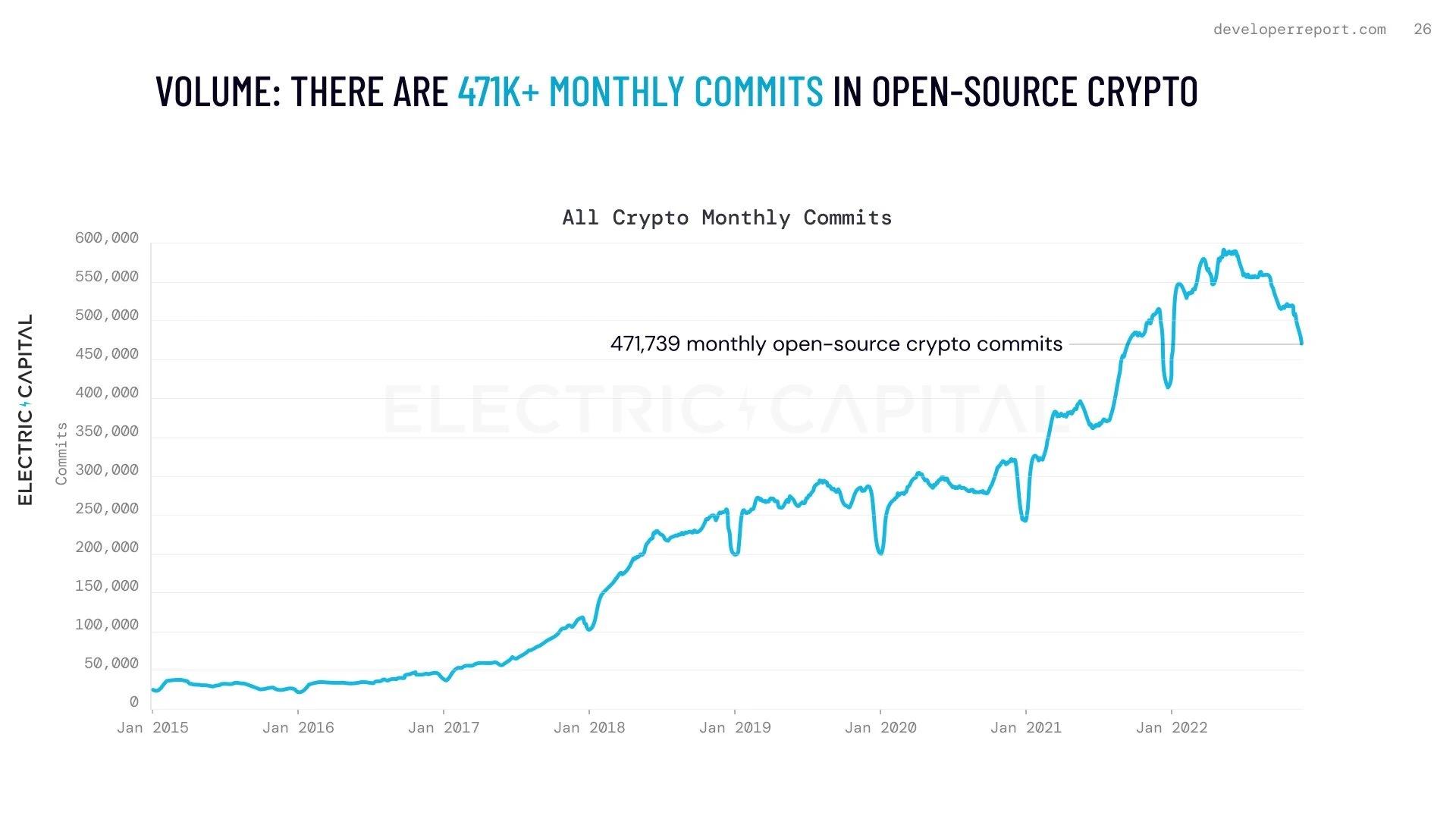
- Developers were segmented by monthly code submission frequency. It was found that the growth rate of full-time developers (+8%) was the highest, with full-time developers submitting 76% of the code and having the least likelihood of attrition over time.
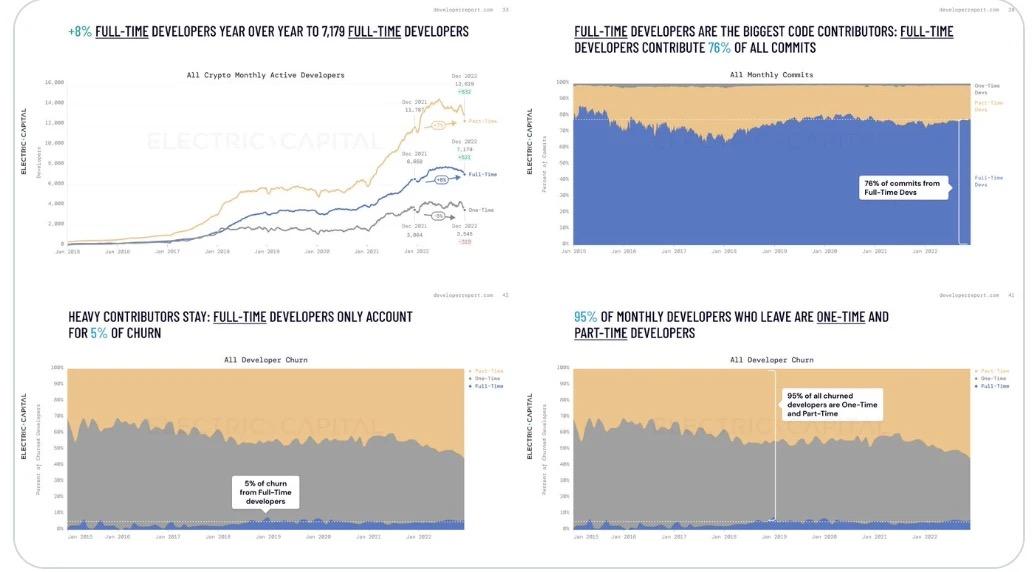
- In 2022, over 61,000 developers contributed to the industry for the first time, setting a new record.
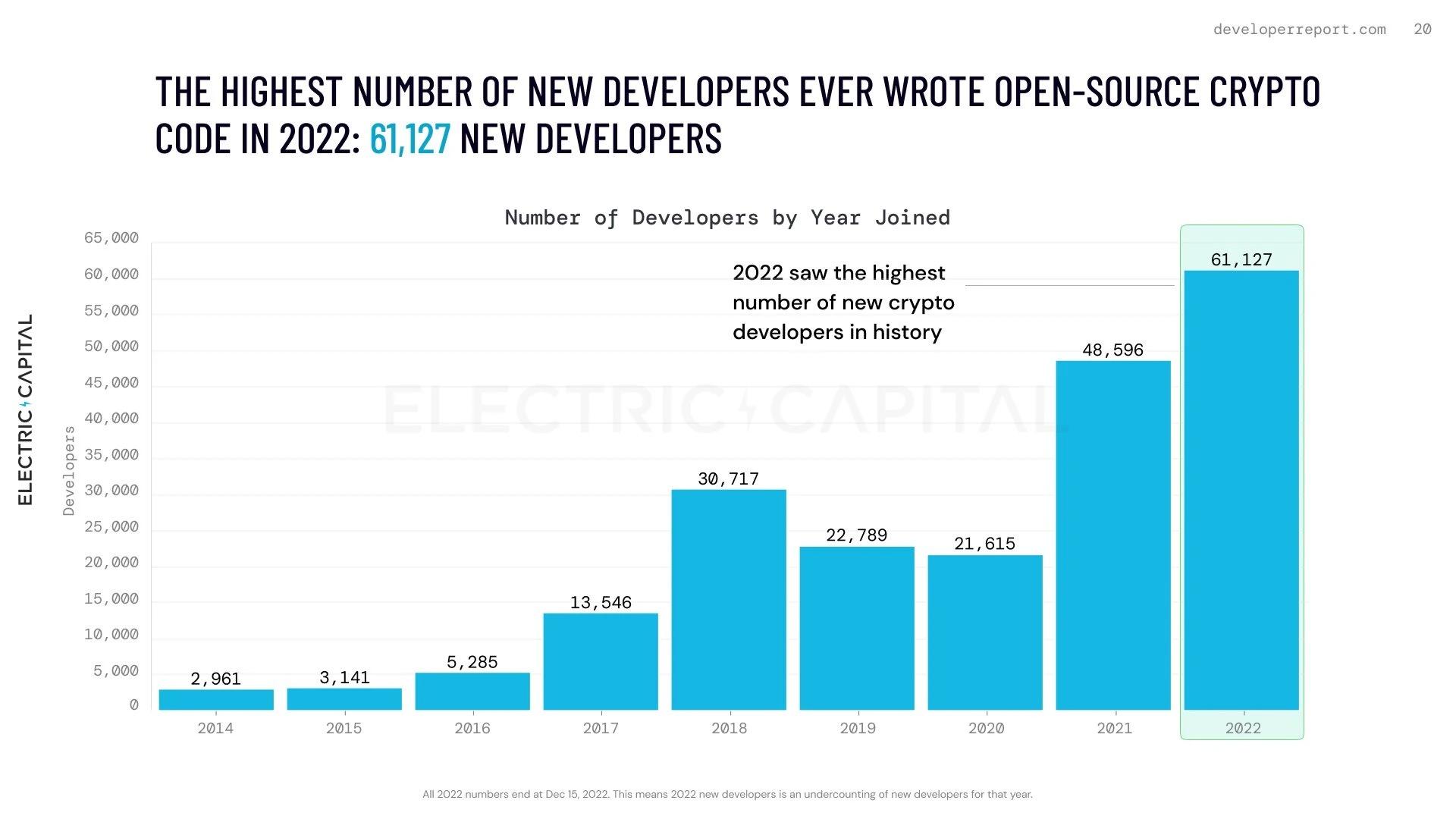
The crypto market value has returned to the levels of January 2018, but the number of monthly active developers has increased by 297% since 2018.
- Compared to the previous crypto winter: the number of monthly active Bitcoin developers tripled, from 372 to 946. Full-time Bitcoin developers decreased by 4%, but part-time developers increased by 9%, and one-time developers decreased by 32%. Since 2017, over 1,000 new developers have contributed to the Bitcoin network each year across market cycles.

- Ethereum is the largest crypto ecosystem, with monthly active developers increasing fivefold, from 1,084 to 5,819. Full-time developers increased by 9%, part-time developers increased by 6%, and 16% of new developers submitted code on Ethereum.
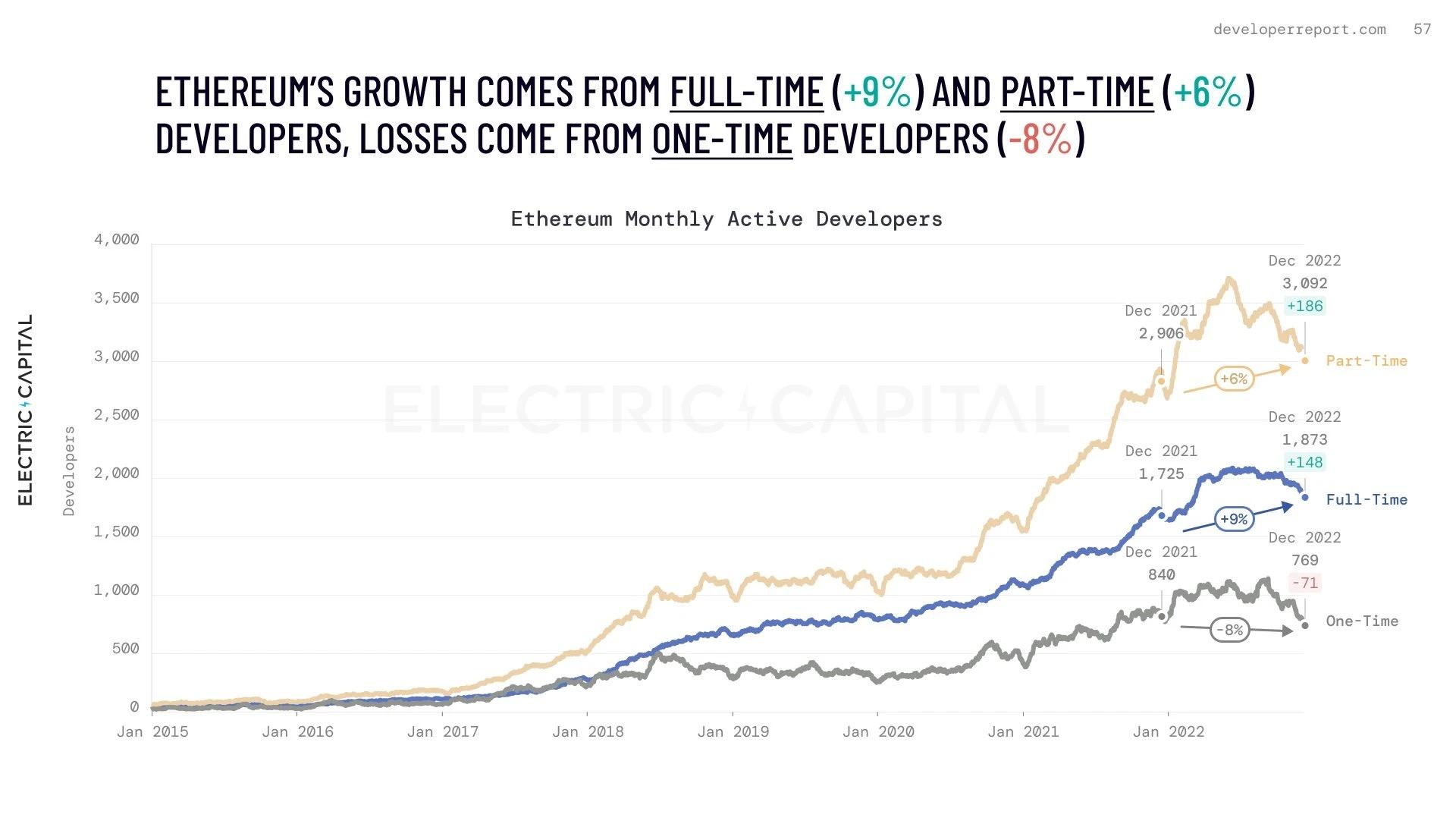
- Other ecosystems that were nearly nonexistent in 2018 are now quite substantial, with developers in Solana, Near, and Polygon increasing by over 40% year-on-year, and the total number of monthly developers exceeding 500. Developers in Sui, Aptos, Starknet, Mina, Osmosis, Hedera, Optimism, and Arbitrum increased by 50% year-on-year.
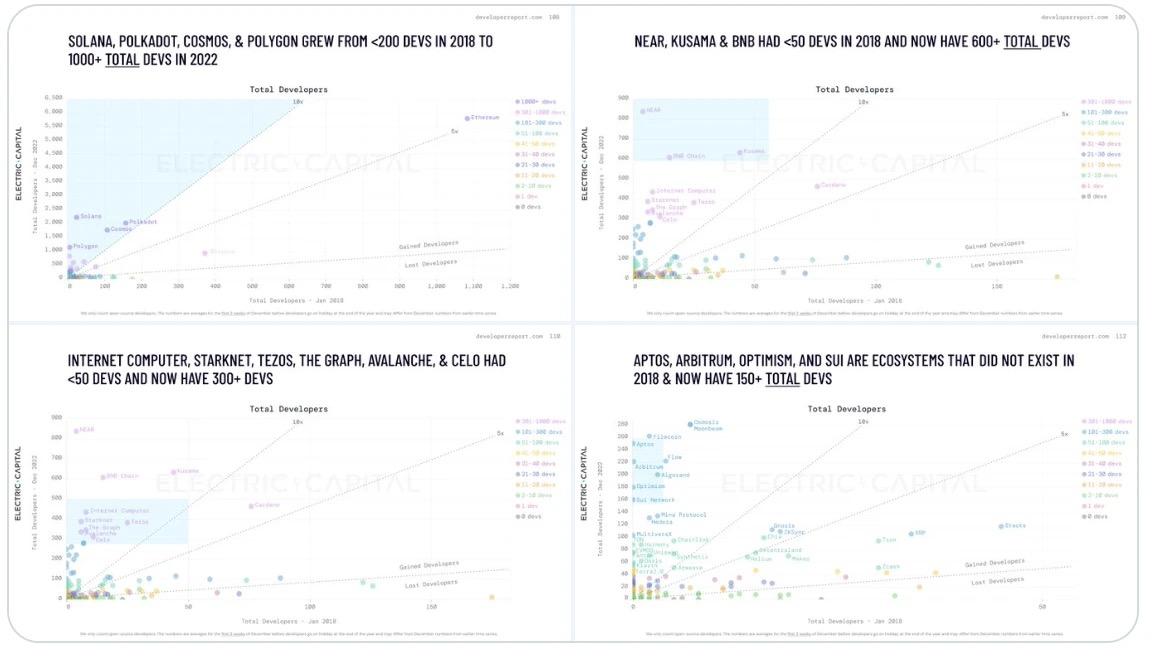
The growth of other data is also impressive
28% of developers are engaged in both BTC and ETH development.
50% of developers work on projects within the top 200 by network value.
22% of developers work on projects outside the top 200 by network value.
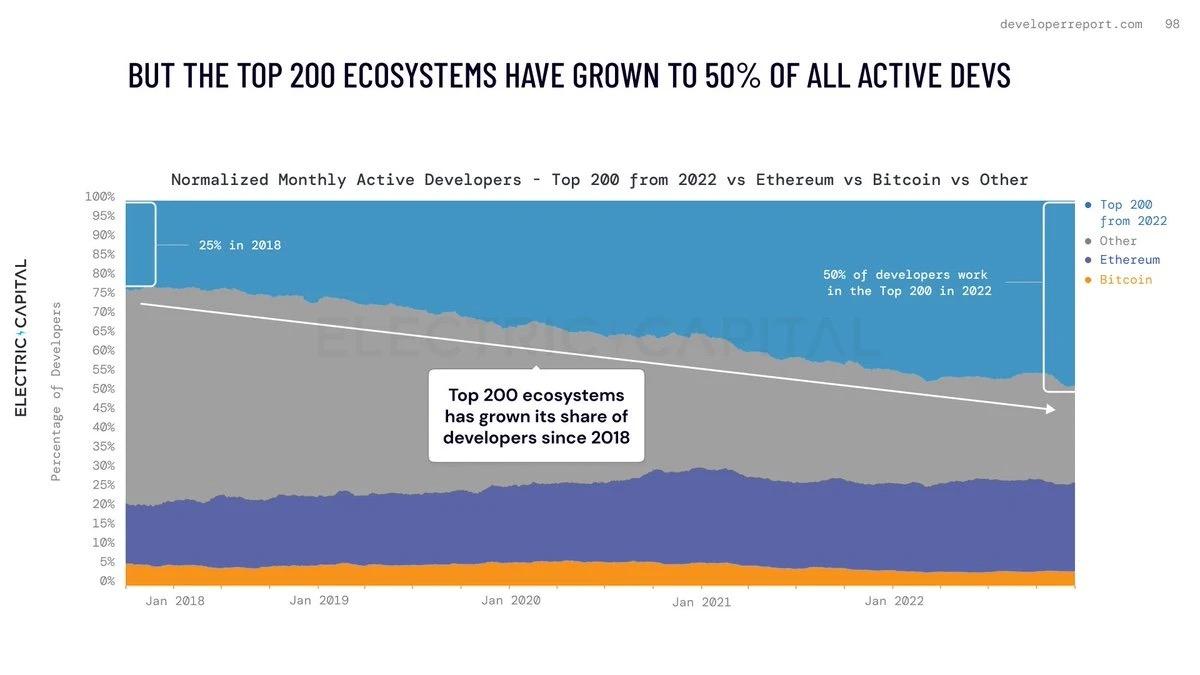
The developer community takes years to reach a certain scale and grow
Polkadot, ETH, Solana, and Polygon took years to develop over 1,000 developers.
Polygon, Solana, Near, Kusama, and BNB Chain cultivated 150 full-time developers in less than 4 years, becoming the fastest-growing emerging ecosystems.
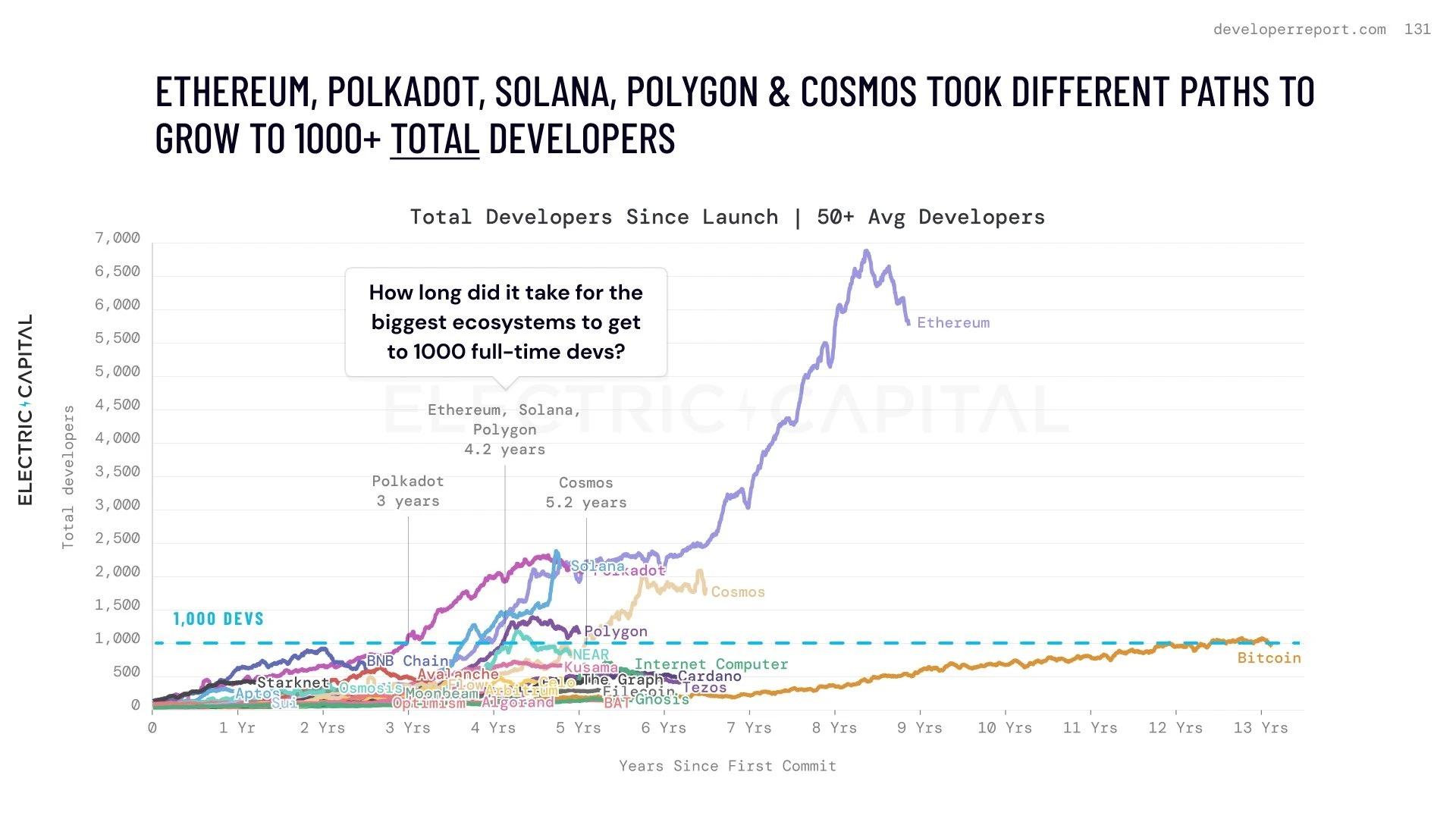
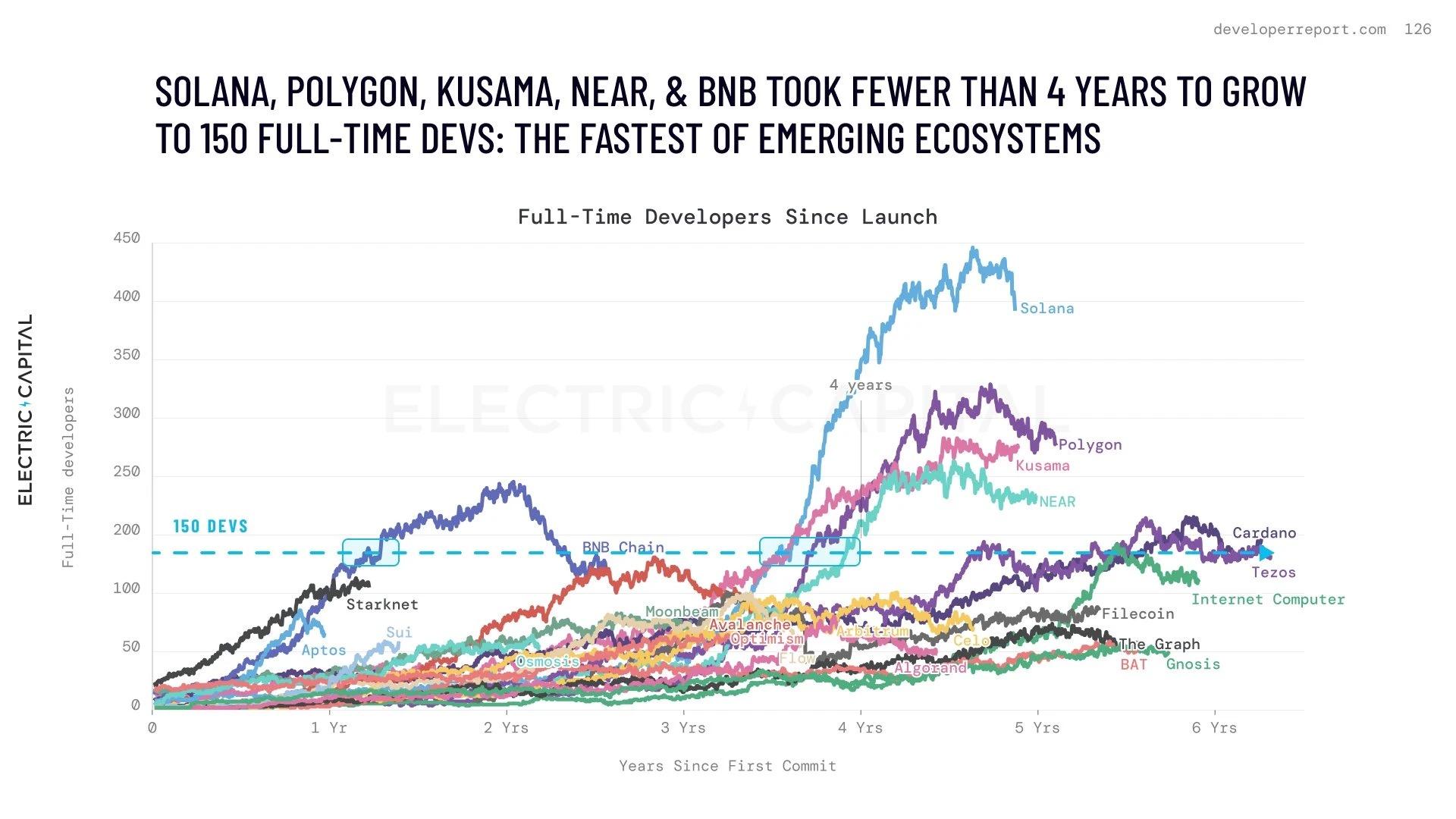
Multi-chain developers are on the rise
37% of ecosystems have over 50 full-time developers who are EVM compatible.
An increasing number of developers are deploying on more than one chain.
Polkadot, Avalanche, BNB Chain, Celo, Arbitrum, and Optimism have more multi-chain developers.
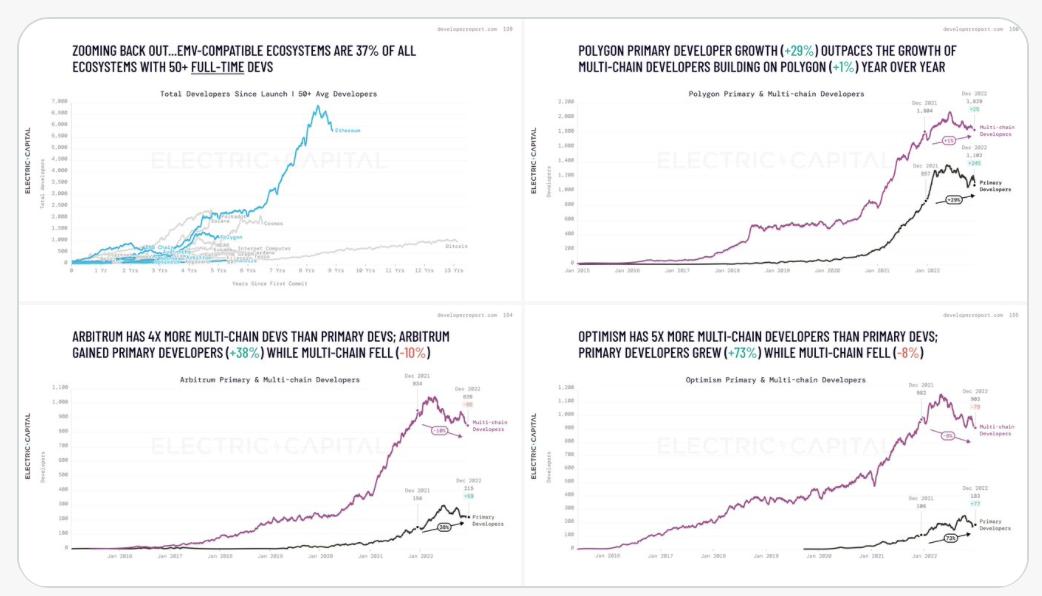
DeFi and NFTs are the largest use cases for gas in cryptocurrencies; how are their developers doing?
Since DeFi Summer, the number of DeFi developers has increased by 240%.
500 new developers join DeFi each month.
50% of DeFi developers work outside of Ethereum.
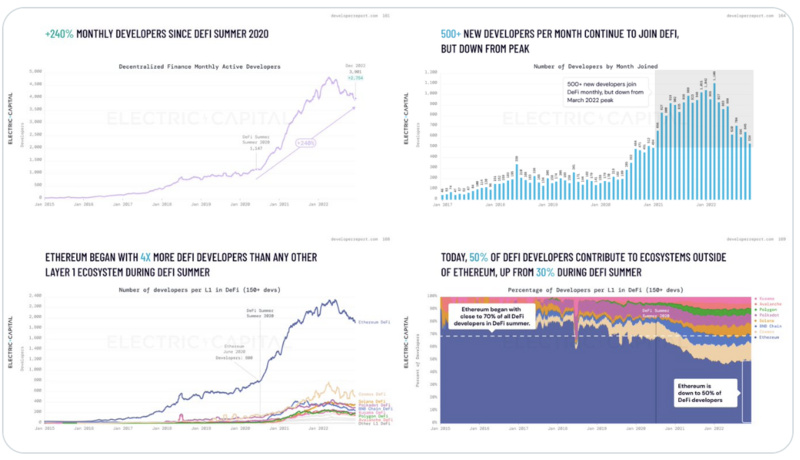
How large is the NFT developer community?
Over 900 developers work on open-source NFT projects each month.
The number of developers has increased by 299% monthly since 2021.
Full-time NFT developers grew by 30%, while part-time developers decreased by 5%, and one-time contributors decreased by 27%.

However, many NFT projects are closed source, and most NFT projects do not require a large amount of on-chain code.
An increasing number of new wallets have their first transaction related to buying and selling NFTs; for example, 80% of wallets in 2022 had their first transaction related to NFTs.
Counting developers by different fields may not be the correct way to analyze NFTs, GameFi, and DAOs.
In NFTs, GameFi, and DAOs, relatively few developers can build reusable components, and the amount of smart contract code written is small relative to community participation. For example, a very small amount of code written by a single developer may drive a large PFP NFT community. Or in the case of GameFi, most of the code may be off-chain and closed source. Therefore, inferring from on-chain and open-source data can be somewhat challenging. However, we believe that community participation signals are an important and complementary leading indicator in the NFT, GameFi, and DAO markets. We are exploring several novel methods to collect community data and signals and will share our findings when available.








